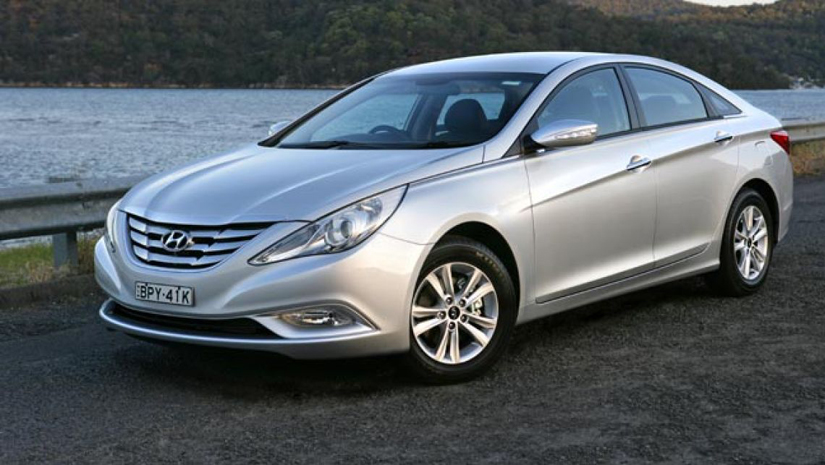The Hyundai i45 was originally launched in a selection of three different specifications, each of them harnessing the power of a 2.4 litre, 4-cylinder engine. This promptly put it right at the top of the performance league with regards to its competitors in the medium sized sedan segment.
Initially the front wheel drive sedan hit the market with starting price that was quite a bit higher than what was expected. That price had it competing against both the Suzuki Kizashi and Mazda 6, yet as we know, Hyundai are known more for their bargain basement offerings than that of charging the roof.
Then the price of the automatic i45 was revealed to be higher still, so high in fact that it was now competing among the likes of the Mondeo and Toyota Camry.
So just what did the i45 have to offer that would justify the price?
Okay, well as you already know, the base spec i45 came with a 2.4 litre engine which was added to with a 6-speed transmission. This transmission was automatic on all specifications apart from the Active which offered 6-speed manual. It delivers an impressive 250Nm of torque at 4250 rpm and has excellent economy at 8L/100km for the manual and 7.9L/100km for the auto.
As for the equipment, the base spec i45 comes with 16 inch allow wheels, trip computer, audio controls on the steering wheel, 6-speaker music system that allows for USB connectivity and some useful automatic headlights.
The seat trim is a combination of cloth and leather, the interior features black highlights and the steering wheel is clad in leather. The car is big too, similar in size to that of a Commodore and can easily fit five comfortably. The boot is also of a good size, easily fitting three large suitcases for when you are off on a holiday with the family.
The suspension is good since its 2011 upgrade, the sound is extremely quiet when inside the car, both resulting in a comfortable time for everybody inside.
Mid-Range Elite and Premium Auto
As for the middle spec of the i45 Elite, this came with full leather seating, slightly bigger 17” alloys, parking sensors and entry and starting is done via keypress.
The Premium edition i45, which was the top of the range, came only in automatic and had a number of added features. This included a panoramic sunroof, even bigger alloy wheels at 18”, electric front seats that harboured seat memory and a much improved sound system.
Summary
Whilst there still seems to be levels of snobbery surrounding Korean cars, the i45 should put this to bed as it is a clear statement of intent from Hyundai of moving from the bargain basement and into the same standards of quality and engineering that you would come to expect from the Japanese brands.
The likes of Hyundai and Kia are now showing that they have what it takes to compete with any one in Asia when it comes to building reliable cars that offer up good amounts of performance.

